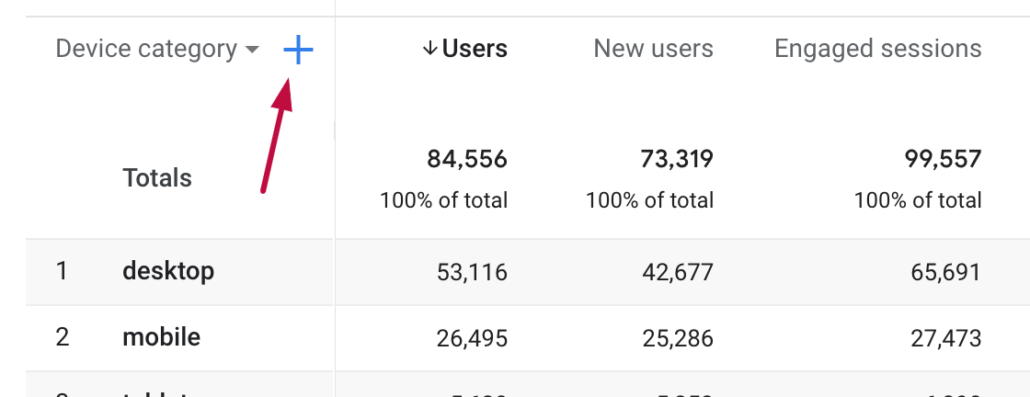Just How to Use Secondary Dimension in Google Analytics for Deeper Insights
Just How to Use Secondary Dimension in Google Analytics for Deeper Insights
Blog Article
Enhance Your Data Analysis Using Secondary Measurement in Google Analytics
Exploring the capabilities of secondary measurements in Google Analytics opens a world of opportunities for refining information analysis. By layering extra measurements onto key data collections, a more elaborate narrative arises, dropping light on individual interactions and efficiency signs.
Understanding Secondary Measurements
In the realm of information analysis, a critical facet to grasp is the principle of second dimensions and their significance in removing deeper understandings from Google Analytics records. Secondary measurements in Google Analytics describe additional criteria that can be included in the key dimension, permitting for a more in-depth analysis of information. By incorporating additional measurements, experts can sector and filter data to discover patterns, fads, and connections that could not be evident when taking a look at the information in its entirety. These secondary dimensions can give context and a much more comprehensive understanding of individual habits, web traffic sources, and other essential metrics tracked by Google Analytics.

Advantages of Making Use Of Secondary Measurements
When evaluating data in Google Analytics, the use of secondary measurements supplies invaluable insights right into user actions and performance metrics. By including an additional measurement to your main information, you can delve deeper right into the features of your web site site visitors and their interactions.
Furthermore, secondary dimensions improve the context of your primary data, giving a more extensive view of customer involvement and performance metrics. On the whole, the usage of additional measurements in Google Analytics can considerably enhance the deepness and high quality of your data evaluation, leading to even more educated decision-making and enhanced results.
Just How to Add Secondary Dimensions
By including additional dimensions in Google Analytics, users can gain deeper understandings right into their data evaluation process, enabling more comprehensive evaluation of user actions and performance metrics. Including additional measurements is a straightforward procedure that can dramatically improve the deepness of analysis. To include a secondary measurement in Google Analytics, beginning by navigating to the record you wish to assess. As soon as in the report, locate the "Additional dimension" tab above the data table. Click it to expose a dropdown food selection with different options such as Behavior, Modern Technology, and Personalized Capacities. Select the measurement you wish to add, such as 'Source/Medium' or 'Device Category'. This second dimension will certainly after that be applied to your existing data, giving extra context and enabling for a more detailed analysis of individual communications. By making use of second measurements properly, users can reveal important understandings that may have otherwise been forgotten, resulting in informed decision-making and enhanced efficiency approaches.
Analyzing Data With Second Measurements
Making use of second measurements in information evaluation provides a more comprehensive understanding of individual habits straight from the source and efficiency metrics. By adding an additional dimension to your key data set in Google Analytics, you can dig much deeper right into the qualities of your site site visitors and their communications. Combining the primary dimension of 'source/medium' with the additional measurement of 'landing web page' can disclose which details web pages are drawing in website traffic from various resources, assisting you optimize these web pages for better involvement.

In significance, assessing his explanation information with additional dimensions equips you to obtain beneficial understandings into customer behavior, identify fads, and make notified choices to improve the performance of your digital buildings.
Finest Practices for Secondary Measurements
In information analysis, including secondary measurements effectively can dramatically improve the depth of understandings acquired from metrics and individual behavior patterns. When using second dimensions in Google Analytics or any various other analytical tool, it is essential to adhere to finest practices to make sure the accuracy and importance of the data evaluation.
One key finest method is to thoroughly pick second dimensions that match the key dimension being examined. Picking secondary measurements that provide extra context or more division can offer an extra thorough understanding of the information. It is also vital to prevent overcomplicating the evaluation by consisting of a lot of additional measurements, which might result in confusion or dilution of understandings.
Additionally, it is suggested to explore various mixes of secondary and key measurements to uncover new correlations and fads. Frequently fine-tuning the choice and examining of second measurements based on the specific objectives of the evaluation can bring about even more workable understandings. By adhering to these finest methods, data analysts can take advantage of secondary dimensions efficiently to improve the general data analysis procedure and decision-making capacities.
Conclusion
To conclude, integrating secondary measurements in Google Analytics is vital for a thorough data evaluation technique. By leveraging second measurements along with key ones, analysts and marketers can uncover important insights and relationships that can inform decision-making and maximize electronic advertising and marketing methods. Comprehending how to successfully use additional dimensions and following finest methods will allow specialists to extract significant data and enhance their total performance metrics.
Additional dimensions in Google Analytics refer to additional criteria that can be included to the primary measurement, permitting for an extra in-depth analysis of information. By including second dimensions, analysts can sector and filter data to discover patterns, fads, and correlations that could not be evident when looking at the data as a whole. Incorporating the primary measurement of 'source/medium' with the additional measurement of 'touchdown page' can disclose which certain web try this site pages are bring in website traffic from different resources, assisting you maximize these web pages for far better interaction.
One key finest practice is to thoroughly pick additional measurements that complement the key dimension being evaluated. By adhering to these best methods, data experts can leverage second dimensions properly to improve the total data evaluation process and decision-making capacities.
Report this page